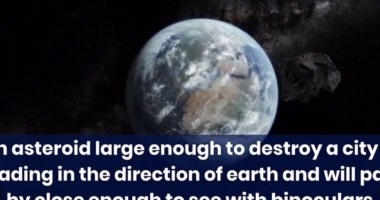The National Oceanic and Atmospheric Administration (NOAA) reported a powerful solar storm hitting the Earth, causing auroras all over the US. The storm was the result of a “stealth” coronal mass ejection (CME) from a coronal hole wider than 20 Earths that was spewing out solar winds at speeds over 2.1 million km/h. It was the most intense solar storm in the last six years, and the unexpected ferocity disrupted power and spacecraft operations. The severe G4 storm can affect the power grid system with possible widespread voltage control problems and atmospheric drag risk on Low Earth Orbiting (LEO) satellites. As the sun approaches its peak in solar activity, we can expect more extreme space weather events in the future.
Powerful Solar Storm Strikes Earth, Strongest in Six Years

The National Oceanic and Atmospheric Administration (NOAA) reported a strong solar storm that hit the Earth recently. This is the most powerful geomagnetic storm in nearly six years, and it resulted in auroras appearing across the US.
Initially, NOAA had announced moderate G2 storm and G3 conditions between March 23 and 25. However, the Earth experienced a geomagnetic storm of magnitude G4, prompting NOAA to update its warning.
The severe G4 storm can affect the power grid system, with a possible widespread voltage control problem, and spacecraft operations, increasing the risk of surface charging and atmospheric drag on Low Earth Orbiting (LEO) satellites.
Geomagnetic storms are caused by coronal mass ejections (CMEs), which are large expulsions of charged plasma from the Sun’s upper atmosphere or corona. This particular storm was the result of a “stealth” CME, coming from a coronal hole wider than 20 Earths that was spewing out solar winds at speeds over 2.1 million km/h. The storm was also the most intense in the last six years.
The unexpected ferocity of the storm made auroras visible as far south as New Mexico in the US. It also forced spaceflight company Rocket Lab to delay a launch by 90 minutes.
We can expect more extreme space weather events like this powerful geomagnetic storm as the sun builds towards a peak in its 11-year solar activity cycle, expected to occur in 2025.
In conclusion, the solar storm that hit the Earth was powerful and unexpected, causing auroras across the US and disrupting power and spacecraft operations. As the sun approaches its peak in solar activity, we can expect more extreme space weather events in the future.
Don’t miss interesting posts on Famousbio









